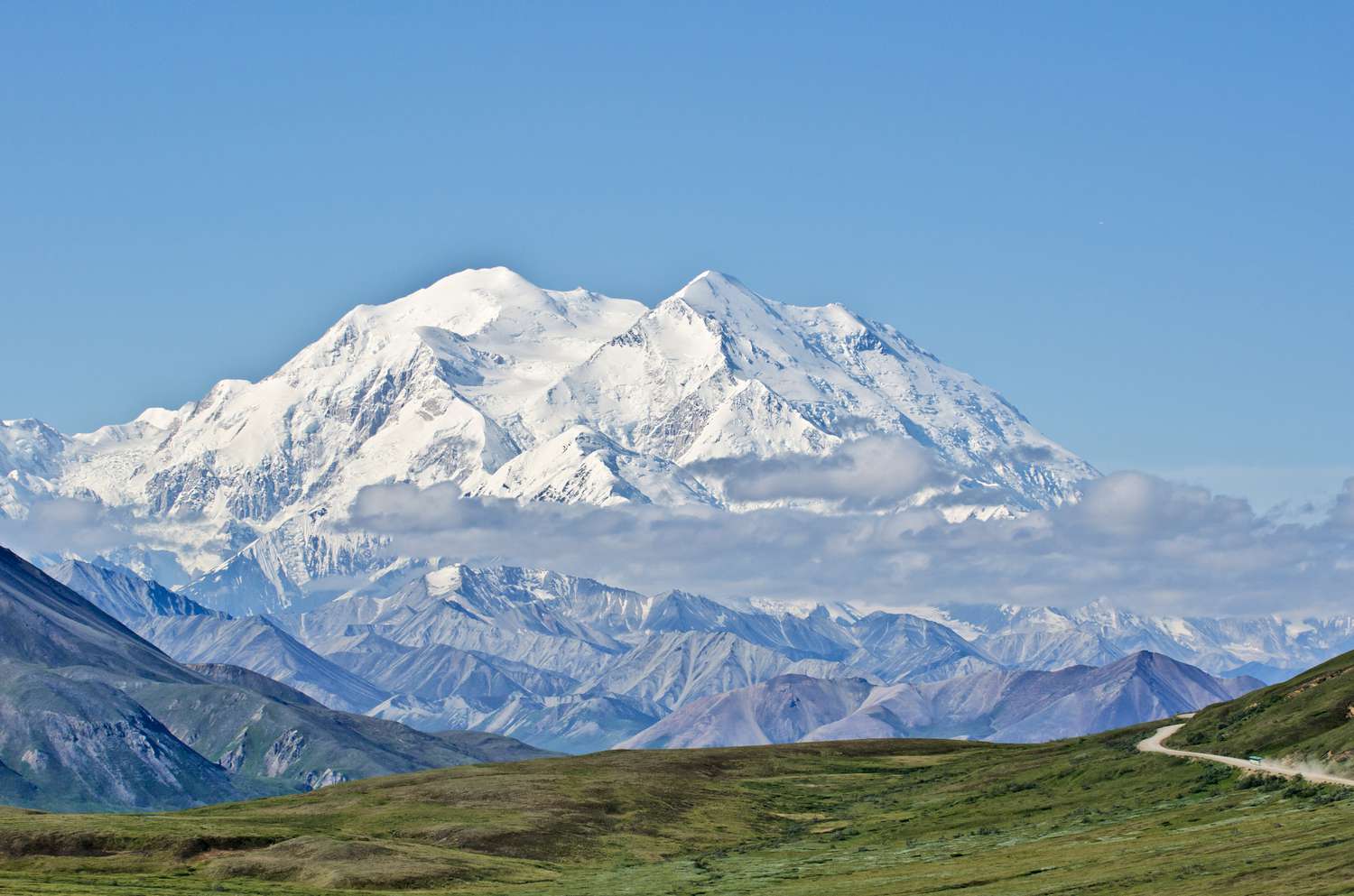
Have you ever wondered how high the highest point on Earth is? Or maybe you’ve pondered how the altitude in various locations can impact climate and human activity? Elevation is a fascinating aspect of geography that plays a significant role in shaping our planet. From towering mountains to deep ocean trenches, the world’s elevation ranges from astonishing heights to mind-boggling depths.
In this article, we will dive into the world of elevation and explore 10 unbelievable facts that will leave you in awe. Whether you’re a geography enthusiast or simply curious about the wonders of our planet, these facts will surely amaze you. So, fasten your seatbelt and get ready for a thrilling journey through some of the most amazing elevation-related phenomena.
Key Takeaways:
- Elevation affects climate and weather patterns. Higher elevations are cooler and experience different temperature and precipitation patterns, impacting the environment and outdoor activities.
- Mount Everest is the highest peak, and the Dead Sea is the lowest elevation on land. These extreme elevations create unique experiences for adventurers and tourists, from mountain climbing to buoyant swimming.
Elevation affects climate and weather patterns
Did you know that elevation plays a crucial role in determining climate and weather patterns? Higher elevations tend to be cooler, with lower air pressure and thinner air. This results in different temperature and precipitation patterns compared to lower elevations. Mountains, for example, often experience more rainfall and snowfall than nearby low-lying areas. Elevation is a key factor in understanding and predicting weather patterns in different regions.
Mount Everest is the highest elevation on Earth
At an astonishing elevation of 29,029 feet (8,848 meters), Mount Everest proudly holds the title of the highest peak on Earth. Located in the Himalayas, this majestic mountain has become a symbol of mountaineering achievements and a magnet for thrill-seekers from around the world. Scaling Mount Everest is an extraordinary feat that demands physical endurance, mental strength, and a deep passion for adventure.
The Dead Sea is the lowest elevation on land
Contrary to Mount Everest’s soaring heights, the Dead Sea, located between Jordan and Israel, boasts the lowest elevation on land. Its surface sits at approximately 1,410 feet (430.5 meters) below sea level. The high salt content in the water makes it impossible for humans to sink, creating a unique and buoyant experience for swimmers. The Dead Sea’s distinct geographical features make it a popular tourist destination.
The atmospheric pressure decreases with increasing elevation
As you ascend to higher elevations, you may start to notice changes in atmospheric pressure. This is because the weight of the air above decreases as you move further away from the Earth’s surface. The decrease in atmospheric pressure can have various effects on the human body, such as causing altitude sickness at extreme elevations.
The Tibetan Plateau is known as “The Roof of the World”
The Tibetan Plateau, with its average elevation of over 14,000 feet (4,270 meters), is often referred to as “The Roof of the World.” This vast expanse of highland is home to stunning landscapes, unique wildlife, and a rich cultural heritage. The Tibetan Plateau plays a significant role in regulating global climate patterns and is a destination for adventurous travelers seeking breathtaking views and spiritual experiences.
Mount Kilimanjaro features multiple climate zones
One of Africa’s most iconic landmarks, Mount Kilimanjaro, showcases a fascinating phenomenon known as vertical climate zones. As you ascend the mountain, you traverse through several distinct climate zones, from tropical rainforest to alpine desert. This unique feature makes climbing Mount Kilimanjaro an incredible journey through diverse ecosystems and breathtaking scenery.
The Marianas Trench is the deepest elevation in the ocean
Located in the western Pacific Ocean, the Marianas Trench is the deepest part of the Earth’s oceans. It reaches a mind-boggling depth of approximately 36,070 feet (10,994 meters) below sea level. The extreme pressure and darkness at such depths create a harsh environment where only a few species can survive. The Marianas Trench continues to fascinate scientists and explorers, offering valuable insights into the mysteries of the deep sea.
High elevations can affect the taste of coffee
If you’re a coffee lover, you might be intrigued to learn that elevation can contribute to the flavor profile of your favorite brew. Coffee beans grown at higher elevations tend to have a more refined and complex taste, thanks to the cooler temperatures, lower oxygen levels, and slower maturation process. Regions with high elevations, such as the famous coffee-growing areas in the mountains of Colombia and Ethiopia, produce some of the world’s finest coffee beans.
Elevation impacts athletic performance
Athletes who train and compete at high elevations may experience advantages and challenges due to the lower oxygen levels. With less oxygen available, the body’s cardiovascular system and muscles must adapt to perform at their peak. Many endurance athletes choose to train in high-altitude locations to improve their stamina and oxygen utilization, giving them a competitive edge in events held at lower elevations.
The Andes is the longest mountain range in the world
Stretching over 4,300 miles (7,000 kilometers), the Andes is the longest mountain range on Earth. It spans through seven countries in South America and contains breathtaking peaks, deep valleys, and diverse ecosystems. The Andean region has a rich cultural heritage and is home to ancient ruins, vibrant indigenous communities, and iconic landmarks such as Machu Picchu and the Atacama Desert.
Conclusion
In conclusion, elevation is a fascinating aspect of geography that affects our daily lives in more ways than we realize. From the tallest mountains to the lowest valleys, understanding elevation helps us appreciate the complexities of our planet. The diverse landscapes and differing climate patterns that result from varying elevations contribute to the rich biodiversity and geological wonders that make our world so unique.
By learning about elevation, we gain a deeper understanding of how our environment functions and how it influences everything from weather patterns to human settlements. Additionally, understanding elevation is crucial for activities such as hiking, mountaineering, and engineering projects.
So, the next time you find yourself awe-inspired by a majestic mountain range or marveling at a scenic valley, remember that elevation plays a vital role in shaping these breathtaking landscapes.
FAQs
1. What is elevation?
Elevation refers to the height of a location above sea level.
2. How is elevation measured?
Elevation is typically measured using devices such as altimeters or GPS technology.
3. What are the factors that determine elevation?
Elevation is determined by various factors, including tectonic activity, erosion, and volcanic eruptions.
4. How does elevation affect climate?
Elevation greatly influences temperature, precipitation patterns, and the distribution of ecosystems. As elevation increases, temperature decreases and the climate becomes colder.
5. What are some famous high-elevation locations?
Famous high-elevation locations include Mount Everest, the highest peak in the world; the Andes Mountains in South America; and the Tibetan Plateau.
6. How does elevation impact human health?
Higher elevations have lower oxygen levels, which can affect breathing and overall physical performance. People may experience altitude sickness when traveling to high-elevation areas.
7. Can elevation affect agriculture?
Elevation can significantly impact agriculture as it affects the temperature, precipitation, and soil conditions of a region, influencing the types of crops that can be grown.
8. Are there any dangers associated with high elevation?
High elevations can pose risks such as altitude sickness, hypoxia, and extreme weather conditions. Proper acclimatization and preparation are essential when undertaking activities in high-elevation areas.
9. What is the highest point on Earth?
Mount Everest, located in the Himalayas, is the highest point on Earth, with an elevation of 29,029 feet (8,848 meters).
10. Can elevation change over time?
Yes, elevation can change over time due to geological processes such as tectonic movement, volcanic activity, erosion, and deposition.
Was this page helpful?
Our commitment to delivering trustworthy and engaging content is at the heart of what we do. Each fact on our site is contributed by real users like you, bringing a wealth of diverse insights and information. To ensure the highest standards of accuracy and reliability, our dedicated editors meticulously review each submission. This process guarantees that the facts we share are not only fascinating but also credible. Trust in our commitment to quality and authenticity as you explore and learn with us.


